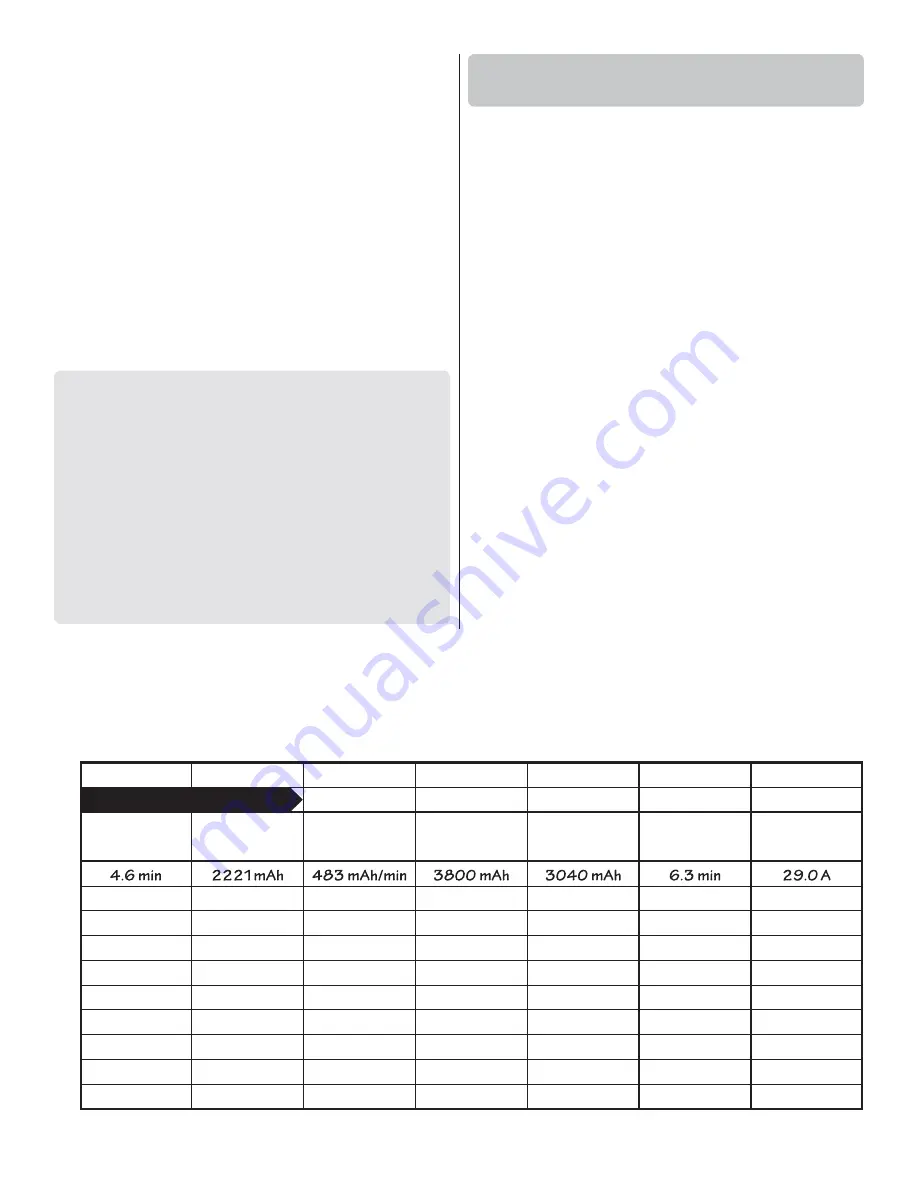
32
●
Use a “chicken stick” or electric starter to start the engine.
Do not use your fi ngers to fl ip the propeller. Make certain
the glow plug clip or connector is secure so that it will not
pop off or otherwise get into the running propeller.
●
Make all engine adjustments from behind the rotating
propeller.
●
The engine gets hot! Do not touch it during or right after
operation. Make sure fuel lines are in good condition so
fuel will not leak onto a hot engine, causing a fi re.
●
To stop a glow engine, cut off the fuel supply by closing
off the fuel line or following the engine manufacturer’s
recommendations. Do not use hands, fi ngers or any other
body part to try to stop the engine. To stop a gasoline
powered engine an on/off switch should be connected to
the engine coil. Do not throw anything into the propeller
of a running engine.
WARNING:
For brushless electric motors, never have the
motor battery connected to the ESC without the transmitter
turned on – after each fl ight (or any time after running the
motor)
always
disconnect the battery
before
turning off
the transmitter. And when ready to fl y (or whenever running
the motor for any reason), always turn on the transmitter
fi rst before connecting the motor battery.
Also make certain your
failsafe
is programmed correctly
so in the event the receiver ever loses signal the motor
will not turn (or, if you inadvertently turn off the transmitter
before disconnecting the battery or vice-versa). Follow the
instructions that came with your radio control system to
check and set the failsafe.
Propeller Selection for
a Brushless Motor
The recommended RimFire .55 is rated for 45 A constant
current and 80 A surge current, so load (prop) the motor to
operate within that range. The closer to 45 A the longer you
can fl y full-throttle and the closer to 80 A the less you can
fl y full-throttle until the motor gets too hot.
For starters, an APC 15 x 8E (on a 6S LiPo) draws momentary,
maximum peaks of about 60 A in the air, but averages a
little less than approximately 33 A with “normal” throttle
use (resulting in a recommended fl ying time of around 5-1/2
minutes). This is a suitable propeller choice for the RimFire
.55 on a 6S battery and fl ies the Ultimate well performing the
type of aerobatic routine for which it was intended.
But we’ve also fl own the Ultimate with a 16 x 8E and a 15 x
10E. Of the props tested, the 16 x 8 E is preferred, but the peak
current draw will be a little higher (around 65 A). Depending
on your fl ying style and throttle usage, this could result in
shorter or even longer fl ight time.
In any regard, keep in mind the Ultimate is not a pylon racer
(where the throttle is
pegged
the entire fl ight!). The Ultimate
is an aerobatic airplane and the motor is therefore propped
accordingly, so it cannot be fl own full-throttle indefi nitely
unless you prop down signifi cantly, but then the Ultimate
it will not be very aerobatic. So always use prudent throttle
management to be certain you do not overheat the motor.
Use a fl ight timer with an alarm to indicate when it’s time
to land before the battery becomes over discharged. For
starters, set a conservative time (4 minutes for example) until
FORMULAS
A
1
2
3
4
5
6
7
8
9
10
B
C
D
E
F
G
B / A
D x .8
E / C
B/1000 / (A/60)
Flight Time
(.10 ths )
Recharge
Capacity
mAh/minute
Battery
Capacity
Target Capacity
to Use in Flight
Recommended
Flight Time
Avg. In-Flight
Current





































